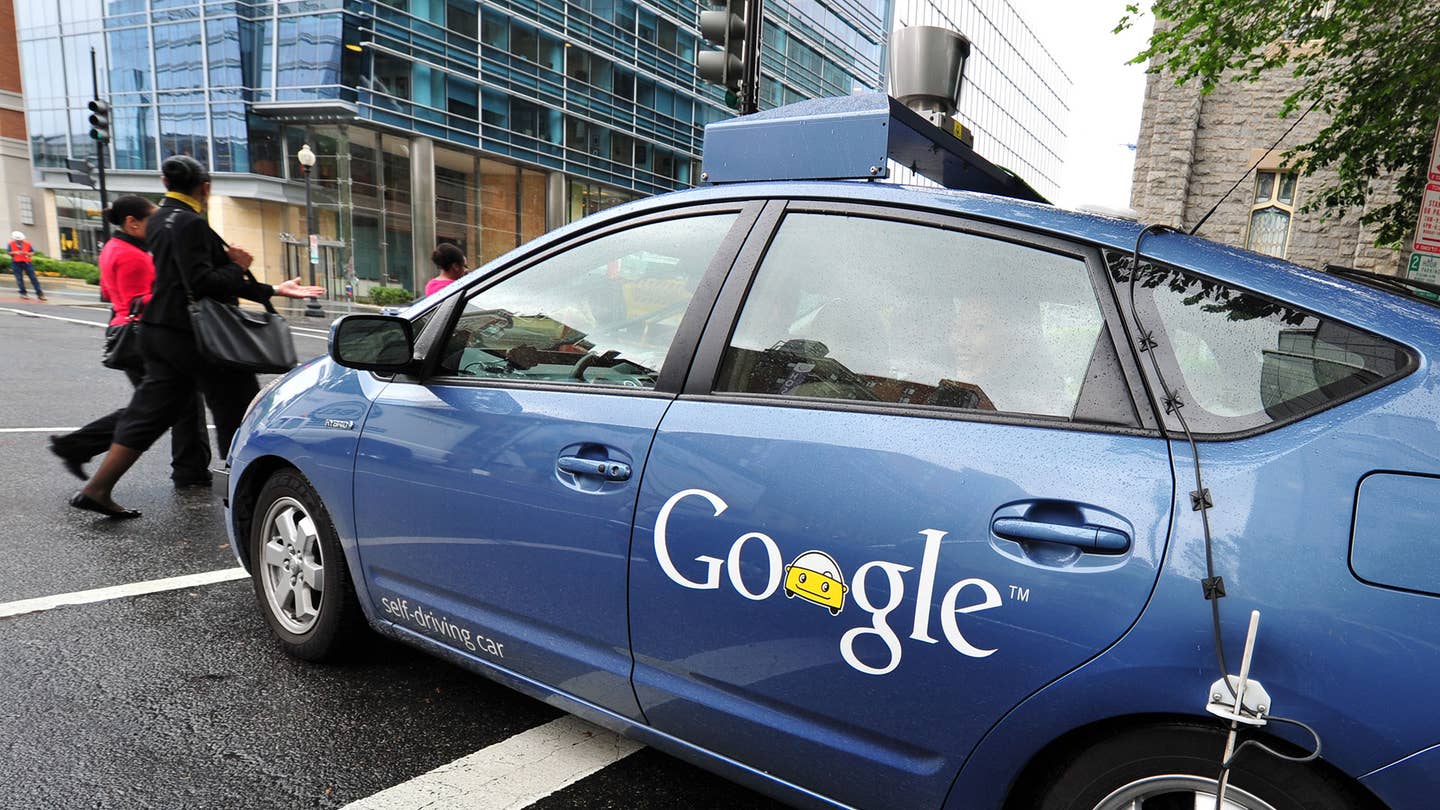Pedestrians Could Bully Self-Driving Cars into Traffic Jam Hell
Municipalities may need to step in to keep self-driving cars from being taking advantage of.

Proponents of autonomous vehicles often cite the machines' potential to eliminate traffic jams as an argument for adopting the technology. But according to a recent paper, "Pedestrians, Autonomous Vehicles, and Cities," the exact opposite could also be true: Pedestrians could bully self-driving cars into gridlockedestrians could bully self-driving cars into gridlock by taking advantage of their safety-first programming, if suitable safeguards aren't put in place.
In his analysis of scenarios involving pedestrians, bicyclists, and autonomous cars to determine how a potential game of chicken would play out, University of California Santa Cruz environmental studies professor Adam Millard-Ball points out that implications that pedestrians could take advantage of autonomous vehicles' kindness requires a few assumptions, including whether or not pedestrians and others could identify autonomous cars in the first place.
His paper points out that autonomous cars will be rolled out slowly, which means that pedestrians won't be able to tell which cars are being driven by a human and which are being piloted by a computer. This uncertainly may lead people to wait before entering a crosswalk to ensure a car "sees" them. If Volvo's strategy not to mark its fleet of autonomous vehicle used in its pilot program becomes the norm, it's likely people will think twice before cutting the likes of an autonomous XC90 off.
However, in the not-too-distant future, it's possible all cars will be driven using artificial intelligence and an abundance of well-programmed caution. If that's the case, permanent gridlock could become a reality if a fully-autonomous vehicle entered a dense urban centers, such as Union Square in New York City.
But that's assuming they were allowed there in the first place.
Due to heavy foot traffic, self-driving cars may drop passengers off on quieter peripheral streets, where there are fewer opportunities to encounter aggressive pedestrians. Or cities could designate barricaded pathways for cars and walkers that would prevent vehicle-pedestrian encounters.
And if bullying by bicyclists or people becomes a widespread problem, legislators could step in to facilitate orderly traffic flow by cracking down on jaywalking—or even absolving autonomous cars of responsibility in accidents where others disobeyed the rules of the road.
And finally, people may be jumping to a faulty conclusion when assuming autonomous cars will be programmed to "play nice" with everyone. Millard-Ball points out manufacturers could build in rules that prioritize some vehicles over others on the road. "A Honda might cut off a Toyota, but not another Honda," is one scenario he suggests.
Sadly, cooperation isn't baked into human behavior to the degree society would need it to be for a fleet of self-driving cars to interact with one another without some degree of external control. And don't forget, it's fallible men and women who are developing the software, which means that pedestrians will be trusting engineers with their lives if they decide to go head-to-head with a 3,000-pound machine traveling half a mile a minute. That's a leap of faith that a lot of people won't be keen to make.
